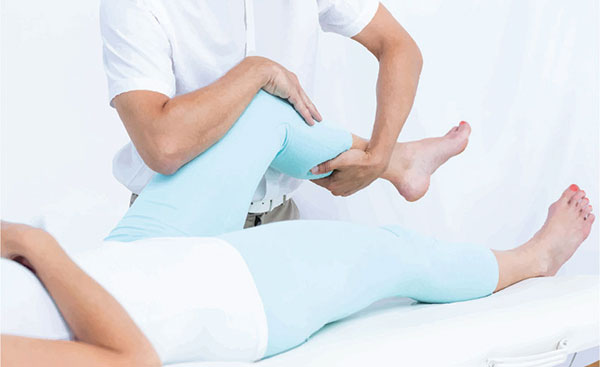The general perception is that physiotherapists are concerned only with massage and exercise. But that’s not all there is to this profession
 Did you always want to be a doctor but haven’t been able to clear the medical college entrance examination? Don’t despair, you can become a doctor of physiotherapy which is increasingly becoming an attractive option. There is a great — and rising — demand for physiotherapists with all kinds of patients, including those recovering from surgery and accidents and some suffering chronic diseases like arthritis, needing their services. Even sports icons, pop stars, fashion models, and sedentary executives are taking to physiotherapy to keep fit and knock themselves into shape.
Did you always want to be a doctor but haven’t been able to clear the medical college entrance examination? Don’t despair, you can become a doctor of physiotherapy which is increasingly becoming an attractive option. There is a great — and rising — demand for physiotherapists with all kinds of patients, including those recovering from surgery and accidents and some suffering chronic diseases like arthritis, needing their services. Even sports icons, pop stars, fashion models, and sedentary executives are taking to physiotherapy to keep fit and knock themselves into shape.
The general perception is that physiotherapists focus only on massage and exercise. But that’s not all there is to this profession. Contemporary physiotherapists manage the not inconsiderable task of restoring, maintaining, and promoting the overall health and fitness of multiplying segments of the population. Conditions ranging from back pain to heart disease, arthritis to paraplegia (paralysis of legs), fractures and amputations, cervical spondylosis to frozen shoulder, head injury, and strokes are increasingly being treated by physiotherapists. A physician perhaps restores a patient’s health but it’s the physiotherapist who improves the quality of her life.
STUDY PROGRAMMES. Bachelor and diploma courses in physiotherapy are offered by 18 colleges recognised by the All India Physiotherapists Association. The four-year graduate degree programme is followed by a six-month internship. Eligibility is Plus Two or equivalent with a 50 percent average in physics, chemistry, and biology, and a pass in English. A typical physiotherapy study programme includes familiarisation with physiology, anatomy, physics, and theory and practice of body movement, electrotherapy, and manipulative procedures. The syllabus also includes a study of medical and surgical conditions for which physiotherapy may be used.
The Rehabilitation Council of India, New Delhi, conducts a joint entrance examination for admission into the first year of the professional programme in physiotherapy and occupational therapy available at the following institutes: National Institute for the Orthopedically Handicapped, Kolkata, and National Institute of Rehabilitation Training and Research, Cuttack. The joint entrance examination is usually advertised in February and the examination is held in May/June. Other medical colleges and institutes which offer similar courses are:
• University of Madras, Chennai
• School of Physiotherapy, Parel, Mumbai
• L.T. Medical College, Sion
• Nair Hospital College, Mumbai
• Christian Medical College, Vellore
• Government Medical College, Chennai
• Apollo College of Physiotherapy, Hyderabad
• Kasturba Medical College, Manipal
A physiotherapist uses natural physical exercises and movements (sometimes in water), weights, electrotherapy, short wave diathermy, ultraviolet light and massage to treat the sick, partially paralysed, and convalescent.
Sometimes physios treat patients under the direction of doctors or they may evolve their own treatment therapies.
There are only 5,000 qualified physiotherapists in India whereas according to the World Health Organisation (WHO) there should be one for every 10,000 citizens. Consequently, according to WHO norms there is a shortage of 95,000 physiotherapists in India!
Considering this, employment and career prospects are excellent for physiotherapists. They are much needed in hospitals, nursing homes, clinics, rehabilitation centres for the handicapped, schools for the mentally challenged and physically disabled children, health institutions, and defence medical establishments. In fact demand far exceeds supply as the medical care industry is fast expanding and will continue to do so. Physiotherapists also have ample scope for private practice and those with adequate capital can establish their own clinics.
The initial remuneration of physiotherapists in government hospitals ranges between Rs.8,000-12,000. Private and corporate-funded hospitals usually start freshers at Rs.15,000 and go up to Rs.20,000 per month. After gaining experience for about five-six years, most physiotherapists start their own practice and can earn anything between Rs.200 to Rs.400 per visit.
The Indian Association of Physiotherapists (IAP), a member of the World Confederation of Physical Therapy (WCPT), has passed a resolution conferring the title of ‘doctor’ on graduate and postgraduate physiotherapists.
(Excerpted from 101 Great Careers for the 21st Century by Indra Gidwani, 2016)























